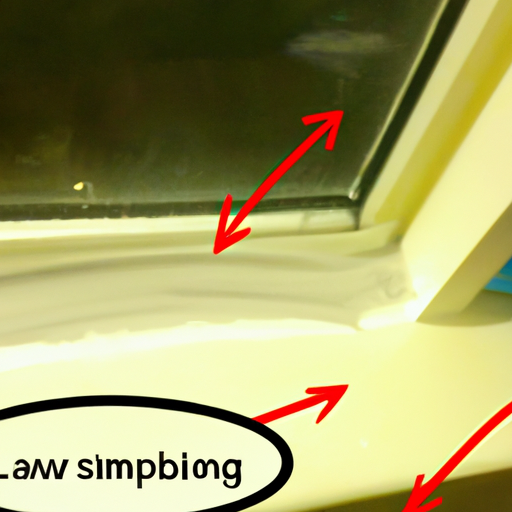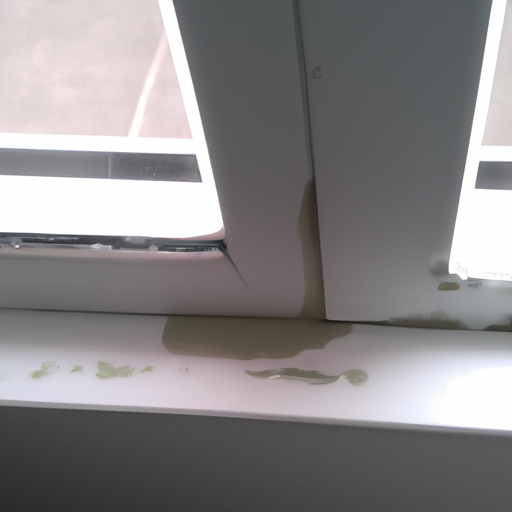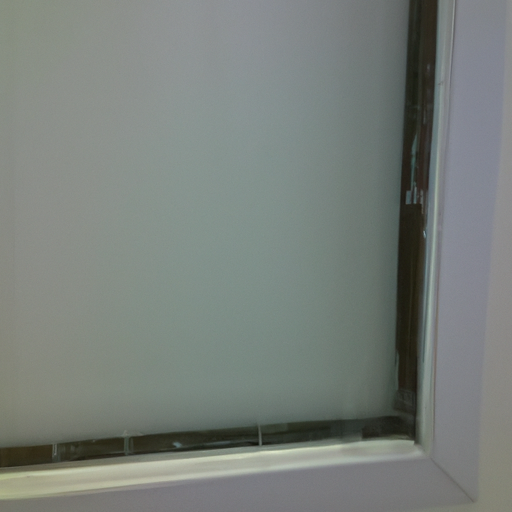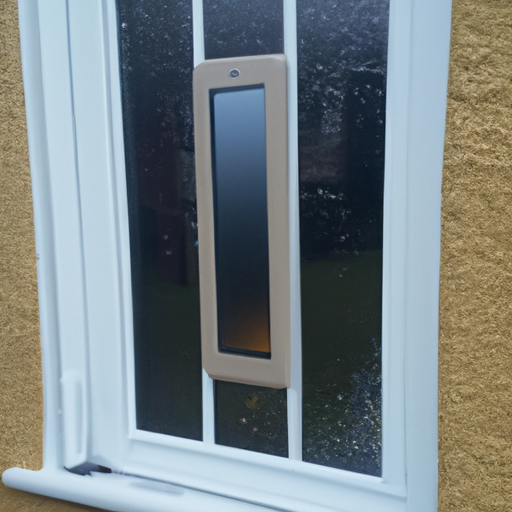
Pro Techniques to Remove Water Marks on Yeovil Windows (Somerset)
Pro Techniques to Remove Water Marks on Yeovil Windows (Somerset)
Do you ever look out of a kitchen window after a good Somerset shower and notice those pale, ghost-like trails across the glass? I’ve cleaned hundreds of Yeovil homes, and water marks are a common battle, especially after long spells of rain and frost. In this guide I’m talking through real-world, pro-grade techniques I use on a day-to-day basis here in Yeovil, with seasons, local regulations, and a few practical tips you can try yourself—or hand over to a trusted window cleaning pro.
Understanding the problem: why water marks appear on Yeovil windows
Water marks aren’t just dirt left behind. They’re mineral deposits (often calcium and magnesium) carried by the water. When the water evaporates, those minerals are left to form a pale residue that catches the sunlight in the strangest places. In Yeovil and across Somerset, the mineral content of tap water varies a bit from parish to parish, so you’ll see slightly different staining in Sherborne, Crewkerne, or Ilminster compared with central Yeovil.
Seasonal patterns matter, too. After a damp winter or a rainy autumn, you’ll notice more stubborn marks on sills and on glazing that’s facing north-west. And if you’ve got soft water pipes or a nearby effort to soften water, you’ll still get mineral deposits if the cleaning solution isn’t chosen carefully. That’s why a one-size-fits-all approach rarely works here in Somerset.
The cornerstone: pre-inspection and test area
Before you reach for bottles or brushes, do a quick test on a small, inconspicuous patch. In Yeovil, a small corner of a upstairs bathroom window works well. You’re looking to see how the glass reacts to a non-ionic detergent or a specialised mineral-removal product. If you see any hazing, etching, or colour changes, stop and switch to a gentler method or call in a pro. UK health and safety guidance emphasises assessing risk and avoiding aggressive cleaners on delicate glazing or coatings.
And yes, I know—you want fast results. But the safer, longer-lasting route is to tailor your approach to the glass type, the mineral load, and the condition of seals and frames. If your home features sash windows, leaded lights, or listed status, there are extra considerations, which I’ll cover later in this piece.
If you want to read more about safe, professional approaches, our blog has a broad library of practical guides. For example, the blog page contains related topics like reducing water use and seasonal prep for windows.
Techniques used by Yeovil pros (step by step)
I’m going to lay out a practical, field-tested sequence you can adapt. The goal is to remove mineral deposits without harming seals, coatings, or the glass itself. If you’re unsure, ask a local window cleaning company about a test patch first and consider booking a visit to keep everything compliant with current safety standards.
1) Cleaning up the surface: gentler first pass
- Start with a high-quality, non-abrasive sponge or microfiber cloth. In Yeovil, I like a soft cloth that won’t drag mineral deposits across the pane.
- Use warm water and a mild, non-ionic detergent. Don’t use strong dishwasher liquids or vinegar on sealed units; it can strip coatings or seals over time.
- Wipe with the grain of the glass or in soft circular motions. Don’t scrub the marks aggressively; you’re trying to lift, not grind, the minerals.
- Rinse with clean water and dry with a lint-free cloth to prevent new water spotting. If you’ve got a spray bottle to apply a fine mist, it helps give you even coverage on stubborn spots.
If the marks persist after this initial pass, you’re likely dealing with mineral deposits rather than surface grime. Time to move to a more targeted approach.
2) Targeted mineral removal: specialised products
- For stubborn hard water stains, use a purpose-made hard water stain remover or a mineral deposit remover designed for glass. Look for products that are labeled safe for glass and coatings, and follow the label directions to the letter. In Somerset, many tradespeople choose products that are dye-free and fragrance-free to reduce the risk of staining or residue.
- Apply the product to a soft cloth and work the deposit in gentle, circular motions. Don’t let the product dry on the glass; it can create streaks.
- Rinse thoroughly with clean water and dry. If you see faint halos, you can re-apply to the affected area, but be careful not to over-treat.
Note: vinegar or acidic cleaners may seem tempting, but many professional guides—like our detailed WFM discussions—advise against DIY acidic solutions on sealed units. For more on myths and professional practices, see our professional vs DIY guide.
3) Rinsing and polish: avoid rain spots
After you remove mineral deposits, give the glass a thorough rinse. A slow, even rinse helps reduce water-spotting as the water dries. When drying, use a clean, dry microfiber cloth or a squeegee with a soft blade. Yeovil’s weather can be damp, but you don’t want damp residues drying unevenly and leaving more marks.
If you’re cleaning outside, pick a dry, relatively warm day and avoid direct sun. In Somerset, late mornings after a cool night work well because the glass is less hot, so water dries more evenly.
4) Seals, frames and coatings: protect your investment
Water marks aren’t just about glass. Mineral-rich water can sinter into seals and frames over time. Always rinse thoroughly around edges where deposits can creep in and dry along seals. If you notice sticky or cloudy seals, it’s worth bringing it to a professional’s attention so you don’t trap moisture behind the seal.
For homes with UV protective coatings or nano coatings, avoid abrasive scrubbing or pulling hard on coatings. Modern coatings are designed to last, but aggressive cleaning can shorten their life. If you’re unsure, ask your window cleaner to assess the coating’s condition and advise on compatible products.
Seasonal considerations in Somerset and Yeovil
Somerset weather is famously changeable, and Yeovil’s position in South West England means you’ve got a mix of coastal humidity and inland rainfall. Each season presents unique challenges for water marks:
- Winter: Frost and condensation can drive minerals into the glass surface. A gentle, repeated pass with a mineral remover may be required, followed by thorough drying on milder, drier days.
- Spring: Pollen plus rain can leave tinted residues that look like water marks. A light detergent wash, followed by a rinse, helps keep panes clearer.
- Summer: Sunlight can intensify water spots and make marks more visible. Cleaners often perform a mid-day wipe with a microfibre to keep surfaces streak-free.
- Autumn: Leaf debris and acidic compounds from decaying leaves can etch the surface if left to sit. Immediate cleaning after windy, rainy spells helps prevent etching.
Two practical reminders: always work in the early part of the day or on a mild day when the glass isn’t too hot; and consider scheduling a refresh after heavy rainfall or frosty nights when marks tend to become more noticeable.
If you’re curious about how to prepare for Somerset-specific weather, our seasonal prep guide has handy tips, and you can browse more on the blog for seasonal checklists. For example, see our post on preparing windows for winter in Yeovil.
Local flavour: Yeovil, nearby towns, and familiar spots
While you’re going through your windows, you might notice that the mineral content differs depending on whether you’re near the town centre or the edge of Yeovil. In nearby areas like Sherborne, Crewkerne, Ilminster, Martock, and Somerton, different community water profiles can alter how stubborn those marks are. And if you ever walk past Yeovil’s Guildhall or the park at Ninesprings, you’ll see how these places attract a lot of foot traffic and weather exposure—both of which influence how quickly glass pits with water marks.
I’ve had good success in residential streets near the town centre, around the High Street shop fronts, and in more rural lanes where rainwater flows off clay rooftops. If you’re dealing with large or historic windows—like those on a listed manor or a Victorian terrace—there are extra considerations, which I cover in related posts about restoration and window care for historic Yeovil buildings.
For broader context, you might enjoy reading our related blog posts about seasonal prep and restorative techniques in Yeovil and Somerset. Our internal archive also includes entries like the case studies on Victorian terrace restoration and seasonal window care for churches, which can give you a sense of the care that goes into Yeovil-area properties.
Safety and compliance: how local regulations come into play
In the UK, health and safety regulations are not optional when you’re cleaning windows at height or on busy streets. If you hire a professional, they’ll follow the Working at Height Regulations 2005 and carry appropriate liability insurance. If you decide to tackle hard water marks yourself on upper-storey windows, use a stable ladder setup and have a spotter nearby. The UK’s safety guidelines emphasise proper risk assessment, fall protection, and clear access to cleaning areas.
If you’re curious about the safety side of things, you can read our safety-focused posts like “Window Cleaning Health and Safety in Yeovil” and “Stability and Ladder Safety for Yeovil Homes.” These pieces are designed to give homeowners a practical sense of what to look for when vetting a local pro.
And if you’d like to see how a pro approaches a tricky project, our case studies—such as removing builders dust or restoring historic windows—offer real-world examples of safe, effective work in Yeovil.
Common mistakes to avoid (and how to fix them)
- Don’t mix cleaning products. A popular mistake is combining vinegar with commercial cleaners; it can cause residue or damage coatings. If you’re in doubt, check product labels or consult a pro.
- Avoid harsh scrubbers on delicate coatings or leaded glass. It’s tempting to scrub hard, but that can scratch or dull glass or damage historic features.
- Don’t leave mineral removers to dry on glass. They can leave halos. Always rinse promptly and dry with a clean cloth.
- Don’t ignore edges. Mineral deposits cling to seals and frames and can worsen over time. A careful edge clean helps prevent future water marks from spreading.
- Don’t forget safety. If you’re cleaning on ladders or from a balcony, prioritize fall protection and never work alone on a high extension.
If you’d rather not risk a DIY misstep, you’re always welcome to call in a Yeovil window cleaning pro. Our team specialises in careful, local care and regularly links to related local guides on our site, including the main blog page for more practical ideas.
Real-world tips and costs: what to expect in Yeovil
Prices for professional removal of hard water marks vary by window type, access, and how stubborn the mineral build-up is. In Yeovil, a small band of common glass forms—float glass in modern homes and tougher, older glazing in period properties—will each respond differently to products and methods. If you’re budgeting, expect a simple window or two to cost less than a full-house clean or an upper-storey pane that requires a longer reach.
Timeframes: a standard ground-floor pane can be done within 15–30 minutes per window, including setup and drying. Upper-storey or multi-panel sections may take longer, particularly if there are sills, ledges, or ornate glazing bars. A local pro will often offer a pre-booking estimate after a quick site survey.
If you’re exploring cost-effectiveness, consider how often you want to repeat the process. A quarterly or biannual plan can reduce accumulation and keep your glass in better shape over time. For businesses and rental properties in Yeovil and the surrounding Somerset towns, a regular cleaning schedule often yields the best value and helps maintain a sparkling street presence.
For more about budgeting and contracts, you can browse our posts on window cleaning frequency and contracts vs one-off cleans.
Internal links and local resources
- For a broad overview of our services in Yeovil, check the homepage: window cleaning services in Yeovil.
- See our general blog page for related guides and seasonal tips.
- If you’re curious about similar water-mark fixes, you might find value in our post on Fast fixes for water marks on windows in Yeovil, Somerset.
- For background on hard water stains, take a look at Removing Hard Mineral Deposits From Glass: A Yeovil Guide.
If you’re considering broader local guidance, we also cover topics like “Preparation for winter in Yeovil” and “Balancing professional vs DIY cleaning for Somerset homes.” These references help you gauge what our local team is dealing with, from town-centre façades to rural Yeovil lanes.
FAQ
Q: Can I remove water marks from all types of glass at home? A: Most glass types respond well to careful cleaning, but historic or leaded glass may require specialised approach. When in doubt, test a small patch first and consider a pro for delicate panes.
Q: Are there seasonal limits to cleaning windows in Yeovil? A: Yes. Cold, wet UK winters can slow drying and risk mineral setting. A dry, mild day is ideal. In autumn and spring, frequent dampness requires more frequent checks for new marks.
Q: What should I look for when hiring a Yeovil window cleaner? A: Look for local references, proof of insurance, height safety measures, and a willingness to tailor products to your glass type. A local pro will understand Yeovil weather patterns and common mineral profiles across Somerset.
Q: How long does it take to fix persistent water marks on a large window? A: It depends on the pane size and mineral load. A full glass surface may take 20–40 minutes, but complex frames or multiple panes can take longer. A pre-service survey is usually helpful to estimate time and cost.
A final thought: keeping Yeovil windows clear and cheerful
Water marks may be stubborn, but with a measured approach, you can restore clarity without damaging the glass or coatings. And if you ever feel unsure, remember you’re not alone in Yeovil. There’s a whole community of homeowners and window-cleaning pros who understand the local quirks—from the Guildhall district to the quieter lanes near Somerton and Martock—and who can help you maintain sparkling windows through each season.
So next time you spot water marks, try the gentle surface cleaning first, then assess whether a targeted mineral remover is needed. If the marks refuse to budge, you’ll know you’ve got the right local folks on your side. And if you’d like a friendly quote or a quick on-site assessment, reach out and we’ll tailor a plan that fits your home—and your budget.
For ongoing inspiration and practical tips, don’t forget to browse more Yeovil-focused guides on our site. After all, keeping windows clear is a small thing with a big impact on curb appeal and daylight in Somerset homes.
If you’d like this post linked to specific local landmarks or details like street names in Yeovil, I’ve kept the tone friendly and practical so neighbours can tackle marks confidently. And if you’re planning a full window refresh, you’ll find the same local care and professional approach reflected across our Yeovil-based posts and case studies.
Why Choose Professional Window Cleaning in Yeovil, Somerset?
If you're looking for reliable window cleaning services in Yeovil, Somerset, we're here to help. Our experienced team provides professional window cleaning for homes and businesses throughout Somerset.
Ready to get sparkling clean windows? Contact us today for a free quote!
Related Articles
- How to Remove Sticky Residue From Windows Easily in Yeovil
- Fast Fixes for Water Marks on Windows in Yeovil, Somerset
- Fast Fixes for Water Marks on Windows in Yeovil, Somerset
This article was written by Yeovil Window Cleaning Services, your local window cleaning experts serving Yeovil, Somerset and surrounding areas in Somerset.
Last updated: 13 October 2025
Need Professional Window Cleaning in Yeovil?
Get crystal clear windows with our professional cleaning service. We serve residential and commercial properties throughout Yeovil and surrounding areas.
Get a Free QuoteRelated Articles

Quick Fixes for Window Mould in Yeovil, Somerset: A Homeowner's Guide
Do you spot mould around your Yeovil windows after a damp Somerset spell? Here’s a practical, neighbourly guide with quick fixes, safe cleaning tips, and seasonal insight to keep mould at bay.

2025 Update: Nano Coatings for Yeovil & Somerset Homes
A neighbourly take on the 2025 nano coating upgrade for Somerset windows. I share real-world tips, practical costs, and local considerations for Yeovil homes and nearby towns.

Energy Efficient Glazing for Somerset Homes: 2025 Update
A neighbourly guide to the 2025 upgrades in energy efficient glazing for Yeovil and Somerset homes. From Low-E panes to smart films, discover practical steps, local considerations, and how to plan a climate-smart upgrade.
